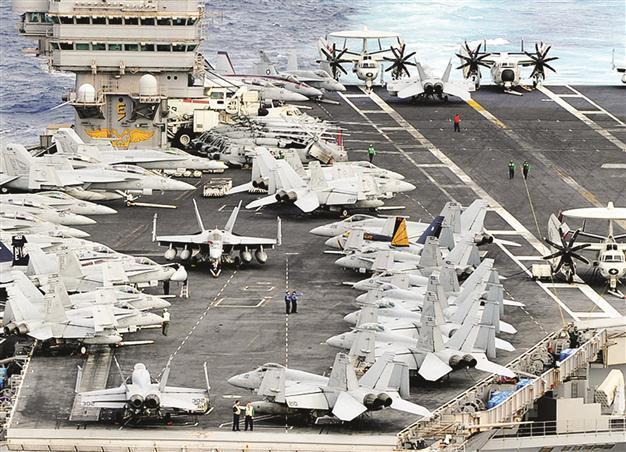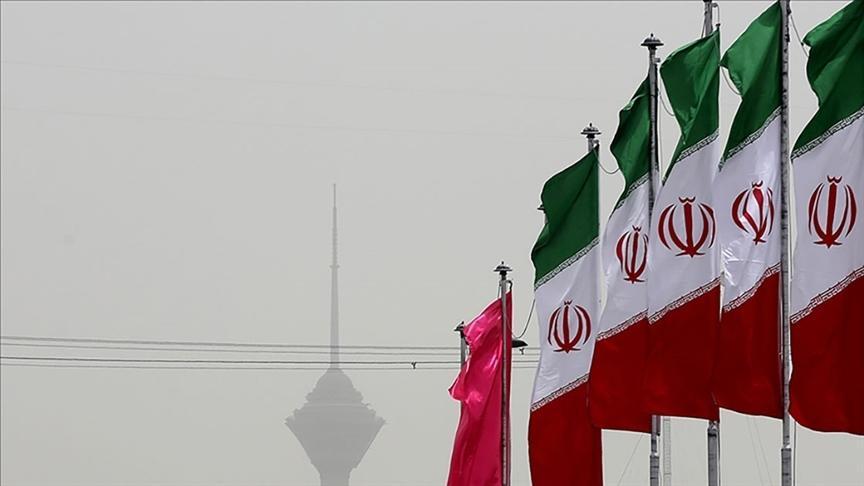Pentagon to slash spending by $260 billion through 2017
WASHINGTON - Reuters

In this photo taken Dec. 16, 2011 and released by U.S. Navy, its aircraft carrier USS Abraham Lincoln (CVN 72) transits through the Pacific Ocean. Lincoln, underway. AP photo
The Pentagon will unveil a five-year budget proposal this week that aims to implement $487 billion in spending cuts over the next decade by trimming the size of the military and canceling or scaling back some weapons programs.Defense Secretary Leon Panetta will outline a budget request for the 2013 fiscal year today that will cut $260 billion in spending through 2017, taking the Pentagon more than halfway to its target for the decade.
Details about the 2013 spending plans have begun to emerge from sources familiar with the budget proposal despite the Pentagon’s efforts to keep its funding discussions secret until they are formally announced.
The budget proposal is expected to eliminate thousands of military and civilian jobs over the next five years at a time when President Barack Obama is running for re-election against a field of Republicans who accuse him of being weak on national security.
Cut in unmanned planes
The proposed budget will terminate or scale back spending on dozens of weapons programs, including the Air Force’s high-altitude Global Hawk unmanned surveillance plane built by Northrop Grumman Corp and the Pentagon’s biggest weapons program, the F-35 Joint Strike Fighter, built by Lockheed Martin Corp.
But it will not tackle some $600 billion in additional spending cuts due to take effect in January 2013 after lawmakers failed to agree on $1.2 trillion in deficit-cutting measures.
Officials said they would revisit the issue and address those cuts later if Congress did not take action this year. Panetta is expected to seek a Pentagon base budget of about $523 billion.
Some programs to be hit by Pentagon’s savings plans are as follows:
- Lockheed’s F-35 jet fighter program, the Pentagon’s largest at $382 billion, will face its third restructuring in three years, with officials slashing 179 jets from the five-year budget and pushing their purchase to later years at a savings of more than $20 billion.
- The Navy will maintain a fleet of 11 aircraft carriers, but has not clarified if it will award a contract to Huntington Ingalls Industries for the next carrier on schedule.
- The number of combat brigades stationed in Europe will be cut in half, from four to two, Panetta said recently.
- The overall size of the Army, which was already scheduled to fall to 520,000 by 2016, could be further reduced to 490,000, a drop of another 30,000 soldiers, analysts say.
- The Navy will retire seven aging cruisers and several amphibious warships, saving money on increasingly expensive maintenance and upgrades.
- It will also propose multiyear procurements of more DDG-51 destroyers and Virginia-class submarines, both built by General Dynamics Corp and Huntington Ingalls, moves that could save about $4 billion by allowing bulk purchases of materials.
- The Navy will also propose a multiyear procurement for more V-22 Ospreys, a tiltrotor aircraft built by Boeing Co. and Textron Inc.’s Bell Helicopter unit that flies like a plane but takes off and like a helicopter.
- The Air Force will lose several programs, including upgrades to its C-130 cargo planes being done by Boeing Co., a troubled weather satellite being built by Northrop, and a new helicopter to replace the Bell UH-1N, which provides security to U.S. nuclear ballistic missile fields.
- The Air Force will continue design work on a new bomber and get two additional orders for a Lockheed communications satellite and one more Lockheed missile warning satellite.
- The Army would rebalance its mix of active duty troops and the National Guard and Reserve, which cost less to fund but can be called up more rapidly than reconstituting a force from scratch.
















